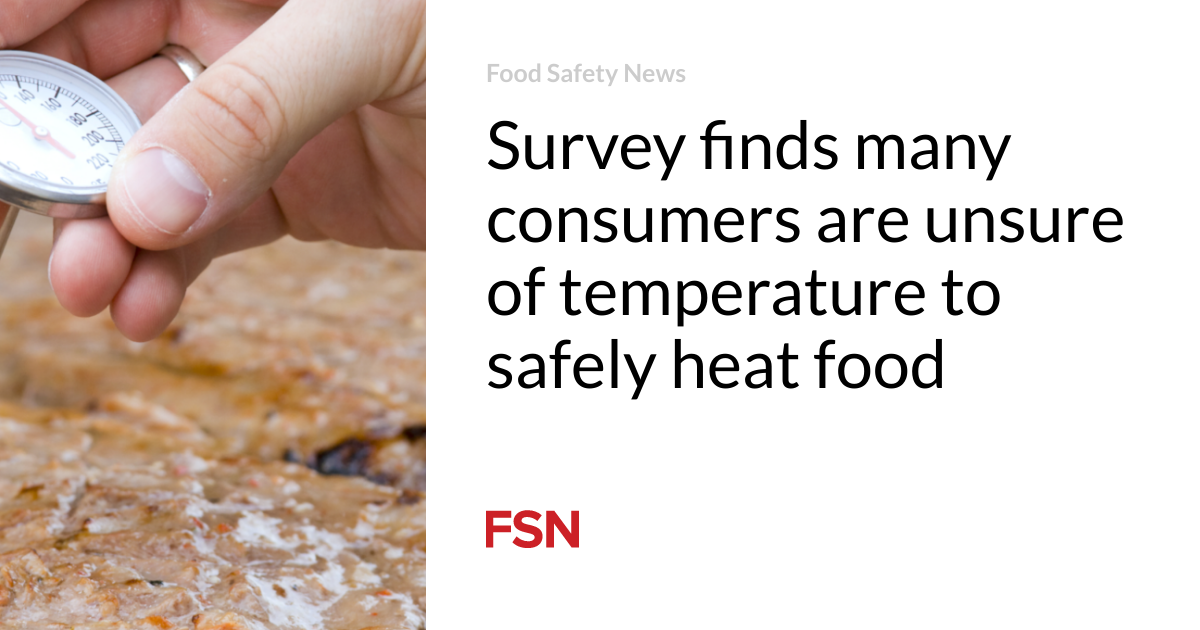Food
Research shows that many consumers are unsure of the temperature to safely heat food

Now that the bird flu virus has been found in cow’s milk, US health authorities have issued warnings against possible sources of exposure, including drinking raw or unpasteurized milk. They also reiterated that consuming uncooked or undercooked poultry or beef products can lead to illness.
Despite these warnings, a new nationally representative survey by the University of Pennsylvania’s Annenberg Public Policy Center (APPC) shows that many Americans are unsure of the proper internal temperatures needed to safely prepare food.
Consumption of raw milk
The survey, conducted in July 2024 among nearly 1,500 U.S. adults, found that only three percent of respondents reported drinking raw milk in the past 12 months, while four percent were unsure if they had. Despite the low percentage of raw milk consumption, the associated dangers remain high. The Centers for Disease Control and Prevention states that consuming unpasteurized milk and products made from it can expose individuals to harmful germs such as Campylobacter, Cryptosporidium, E. coli, Listeria, Brucella and Salmonella.
From September 2023 to March 2024, a significant salmonella outbreak linked to unpasteurized milk from Raw Farm in Fresno, CA sickened 171 people and hospitalized 22. This outbreak is the largest in more than two decades involving raw milk. Pasteurization heats raw milk to 165 degrees F for at least 16 seconds.
Using a food thermometer
The research also revealed a worrying gap in the use of food thermometers. Only about 27 percent of American adults reported that they “often” or “always” used a food thermometer to make sure the meat, poultry or fish they consume has reached a safe internal temperature. Another 29 percent admitted they “never” use a thermometer, while 20 percent said they use one “rarely” and 20 percent “sometimes.”
“Using a food thermometer to determine if meat, poultry, fish and eggs have been cooked to a safe internal temperature, a temperature that kills bacteria such as E. coli and salmonella, is one way to protect yourself from food poisoning,” says Kathleen Hall Jamieson, director of the Annenberg Public Policy Center. “Every cook should have a food thermometer within reach in the kitchen or near the grill.”
Lack of knowledge about safe temperatures
The APPC research revealed a significant lack of knowledge about the appropriate temperatures needed to kill the H5N1 virus, commonly known as bird flu. More than half of those surveyed, 51 percent, were unsure what temperatures would effectively kill the virus. Only 38 percent knew that heating poultry to at least 165 degrees Celsius is necessary to kill bacteria and viruses, including H5N1.
When asked about other meat, fewer respondents knew the correct temperatures. Only 29 percent correctly identified that ground beef should be heated to at least 165 degrees F, and only 21 percent knew that steak should be heated to 145 degrees F and “rested” for three minutes before eating.
Bird flu and food safety
In June, the FDA reported the detection of the H5N1 bird flu virus in cow’s milk. Although the virus was found in the meat of one “cull cow” during USDA testing, it did not enter the food chain. As of July 25, 2024, thirteen cases of bird flu in humans had been reported in the United States since April 2024, with cases linked to both cows and poultry in Colorado.
The CDC emphasizes that there is no evidence that anyone in the United States has become infected with bird flu viruses after eating properly handled and cooked poultry products. However, the risk of infection from uncooked or improperly handled poultry remains.
Public awareness and education
The research shows that there is a critical need for more public education about safe food handling practices. Although the CDC and other health authorities provide guidance, the survey shows that many Americans are unaware or unsure of these essential safety measures.
(To sign up for a free subscription to Food Safety News, click here.)











